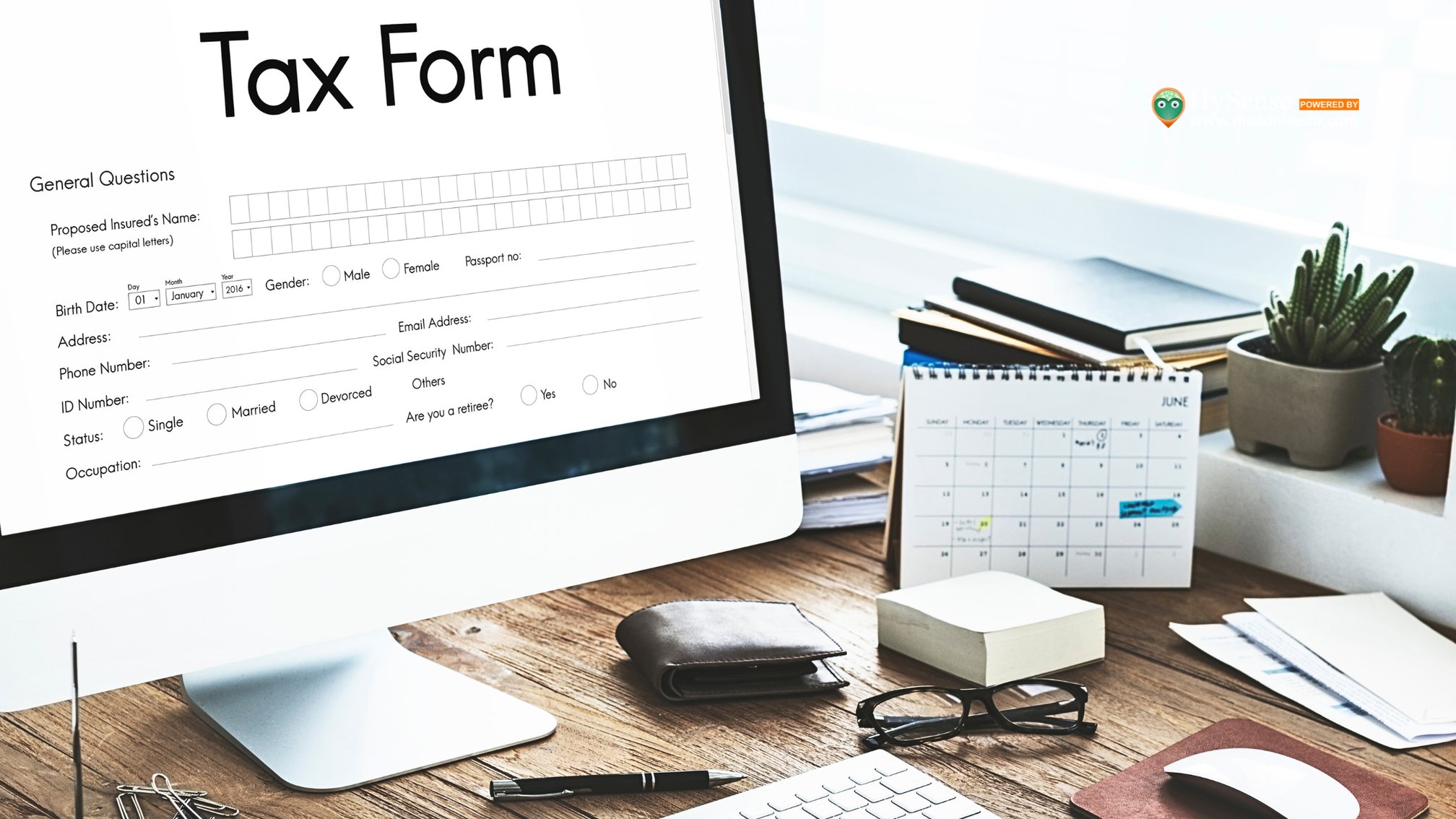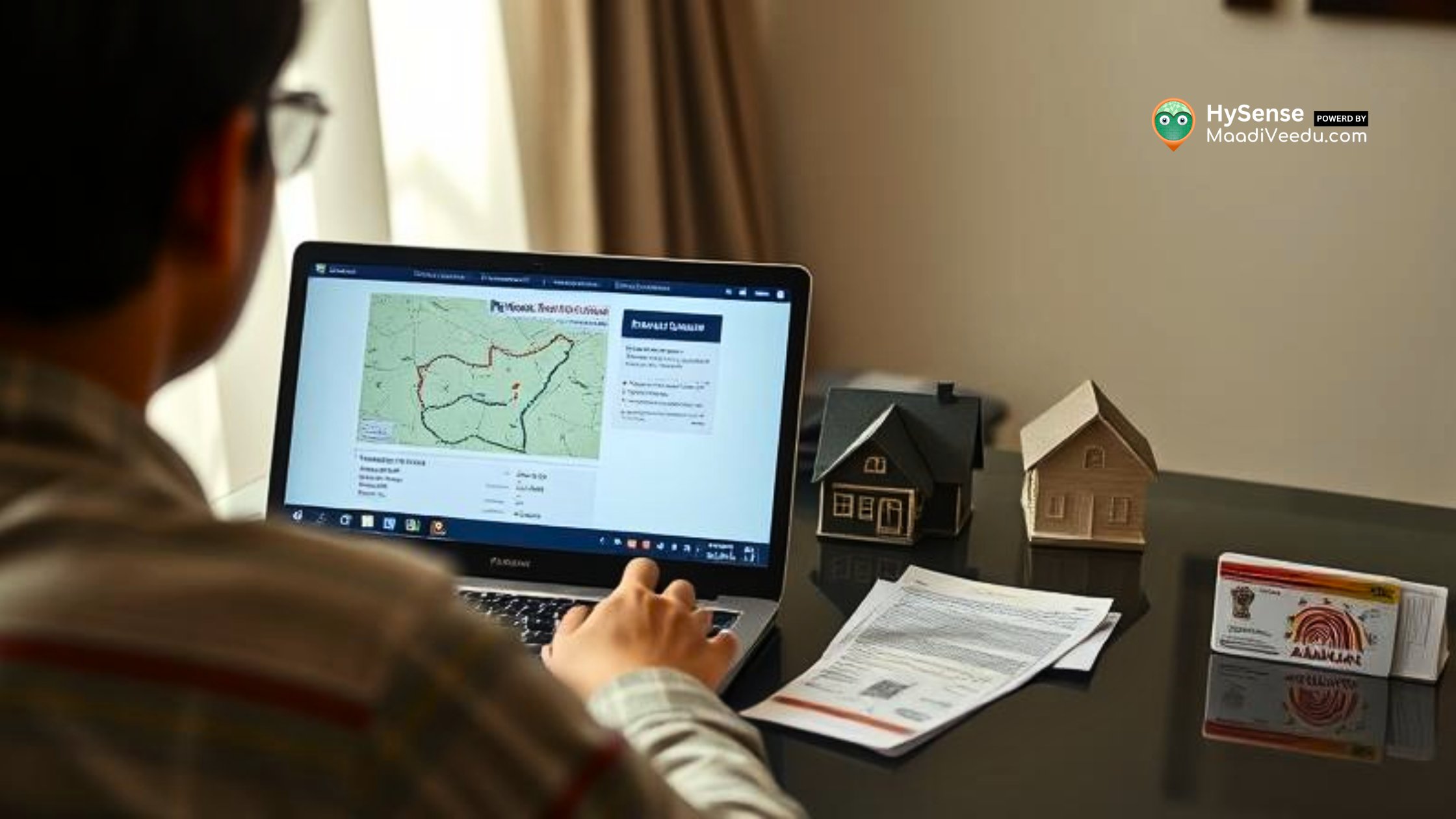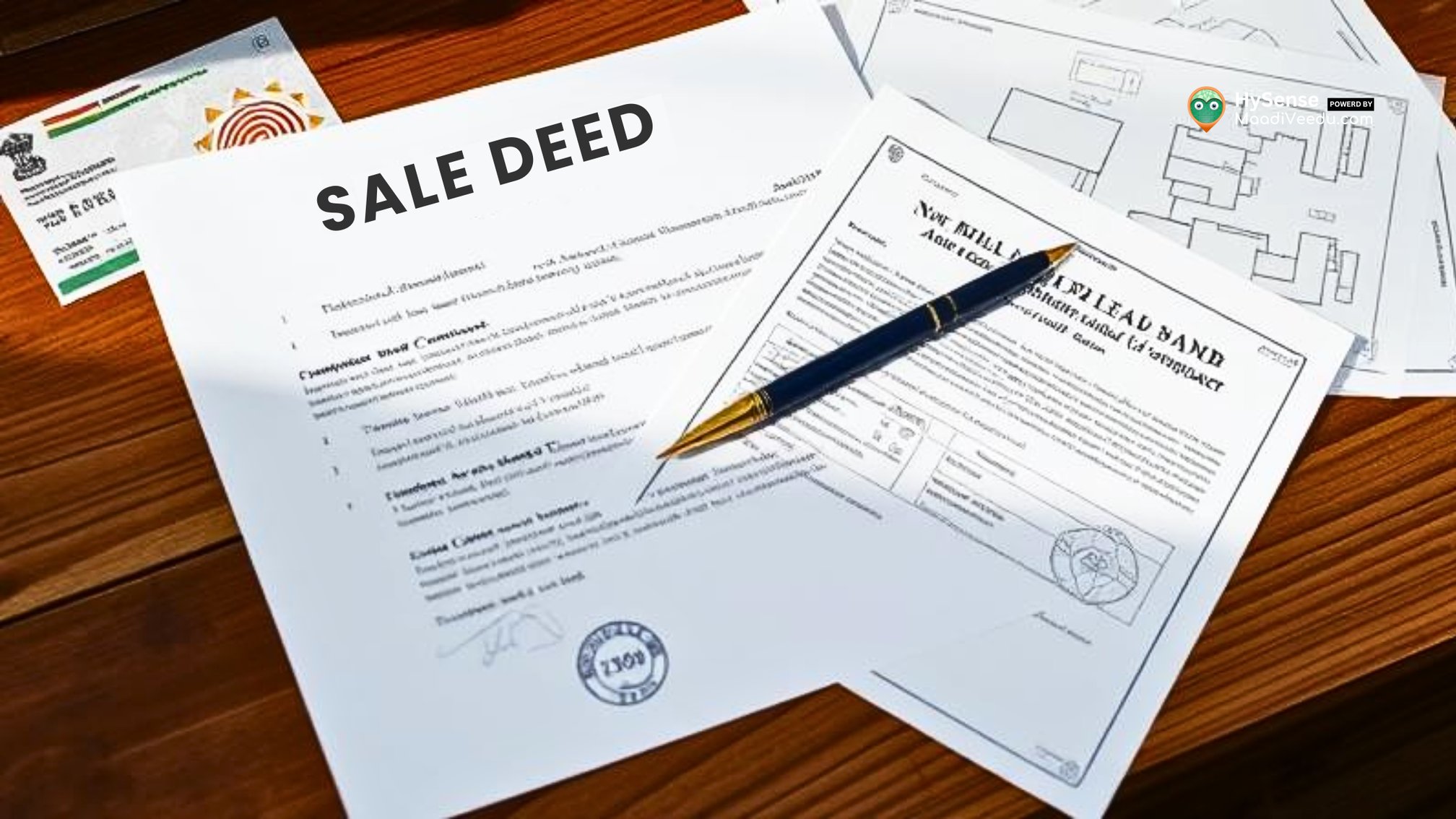How to Apply for Property Tax: 5 Simple Steps for Quick Filing
Learn how to file property taxes with this easy, step-by-step guide. From forms to deadlines, get tips to avoid mistakes, apply for exemptions, and pay on time!

Table of Contents
Filing property taxes may seem overwhelming, but it can be a simple task with the right guidance. Whether you’re a new property owner or have owned your home for years, knowing how to apply for property tax efficiently is essential. This guide will walk you through the property tax application process in five easy steps, making the experience smooth and straightforward.
Introduction to Property Tax Filing
Before diving into the application process, it’s important to understand what property taxes are and why they matter. Property taxes are fees imposed by local governments on real estate. They help fund essential services like schools, roads, and emergency response.
To apply for property tax, you need to submit an application to your local tax authority. They will assess your property’s value and determine the tax amount due. This process may vary based on where you live and the specific rules set by your local government.
Step-by-Step Guide to Filing Property Taxes
Applying for property tax might seem complex at first, but breaking it down into clear steps can make the process much more manageable. Here’s how you can efficiently handle each stage, from gathering forms to making payments.
Step 1: Understanding Property Tax Forms and Requirements
The first step in the property tax process is knowing which forms you need to complete. These forms are generally available through your local tax authority, but requirements may vary depending on your location. Common property tax forms include:
- Property Tax Assessment Application: This form is used if you want to challenge the assessed value of your property. If you feel your property has been overvalued, this form lets you appeal the assessment, potentially reducing your tax amount.
- Property Tax Registration Form: Used to register your property with the local tax office, this form ensures your property is recognized in the tax system and linked to your records.
- Property Tax Filing Form: This main form is where you report your property details and calculate any taxes owed.
Before filling out any form, take time to review all requirements on your local tax authority’s website. They usually provide guidance on form specifics, deadlines, and the overall application process. This way, you’ll have a clear understanding of what’s expected before you start filling out paperwork.
Step 2: Gathering Necessary Documentation
After you know which forms you need, it’s time to gather the required documents. Having all necessary documentation on hand will help ensure your application goes smoothly. Common documents include:
- Proof of Ownership: This could be a deed or title document that confirms you own the property.
- Property Valuation Documents: Recent appraisals, assessments, or statements showing your property’s current market value.
- Identification: A government-issued ID, like a driver’s license or passport, may be required to verify your identity.
- Previous Tax Records: If you’ve paid property taxes in past years, previous tax records can help provide a complete history and prevent errors.
Organizing these documents early will save you time and prevent unnecessary delays. Double-check that your records are up-to-date and in good condition, as some documents may need to be replaced if they are expired or illegible.
Step 3: Filling Out Your Property Tax Application
With all documents in hand, you’re ready to complete your application form. Here are some tips to ensure your application is accurate and thorough:
- Complete Every Section: Double-check each part of the form to confirm you’ve filled out all required sections. Missing information can delay processing or even result in a rejected application.
- Verify Property Information: Accurately record your property’s details, including the address, square footage, and current assessed value.
- Attach Supporting Documents: Refer to the form’s instructions on which documents to attach. Any missing or incorrect attachments can slow down the application process.
If you have questions about any section of the form, reach out to your local tax office. They can provide specific guidance on how to fill out fields or clarify any confusing parts. Filing correctly the first time saves you from having to resubmit later.
Step 4: Submitting Your Property Tax Application
Once you’ve completed the application, the next step is submission. Most tax authorities offer two main ways to submit your property tax application:
- Online Submission: Many tax offices now have online portals where you can submit applications electronically. This method is often quicker and provides immediate confirmation.
- In-Person Submission: If you prefer in-person help or have questions, submitting directly at your local tax office is a good choice. The staff can check your documents and confirm that everything is complete.
Regardless of the method, be sure to keep a copy of your submission. For online submissions, save any confirmation emails or tracking numbers. For in-person applications, request a receipt or stamped copy as proof.
Step 5: Property Tax Payment Process
After your application is accepted and reviewed, you will receive a tax bill detailing the amount you owe. Here’s how to handle the payment process:
- Receiving a Tax Bill: Once your application is processed, your tax authority will send a bill with the calculated amount based on your property’s assessed value.
- Payment Methods: Most authorities allow several payment options, including online payments, by mail, or in person. Online payments are often the quickest, but check your local tax authority’s website for available options and deadlines.
- Save Payment Records: Keep a record of your payment confirmation, receipt, or any reference number. These records may be useful for future tax filings or if there’s ever a question about your payment status.
Paying on time is critical to avoid penalties or additional interest charges. Check your tax bill for the payment deadline and try to pay at least a few days in advance to account for any processing delays.
Additional Tips for Applying for Property Tax
Applying for property tax can be simpler and less stressful if you take the right steps. Here are some helpful tips to keep in mind that can make the application process smoother and more efficient:
1. Start Early
One of the best ways to avoid problems is to start your application as early as possible. Filing close to the deadline can lead to rushed mistakes, forgotten documents, or unexpected technical issues if applying online. Starting early gives you:
- Extra Time to Gather Documents: You’ll have more time to find and organize all the paperwork you need, such as proof of ownership or recent property appraisals.
- A Chance to Double-Check Information: An early start allows you to review your information and catch any errors before submission.
- Room for Troubleshooting: If any questions come up, you’ll have time to get answers without feeling pressured by a deadline.
2. Be Aware of All Deadlines
Deadlines for property tax filing and payment are usually strict, and missing them can lead to penalties. To make sure you’re always on time:
- Note Down All Important Dates: Write down filing and payment deadlines in your calendar or planner.
- Set Reminders: Use phone reminders or set alerts to notify you a few days before the deadline so you don’t miss it.
- Check for Changes: Occasionally, deadlines might shift, so check your local tax authority’s website periodically for updates.
3. Keep All Records Organized
Good record-keeping can help if there’s ever a question about your property taxes or if you need to refer back to previous filings. Here’s how to stay organized:
- Create a Property Tax Folder: Keep all tax-related documents, such as confirmation emails, payment receipts, and copies of forms, in one place, either a physical folder or a digital one on your computer.
- Save Digital Copies: For online submissions, save all uploaded files and any submission confirmation you receive. This way, you’ll have backups in case you need them.
- Maintain Annual Records: Keep records from each year’s filing to compare over time, especially if there are changes in property value.
4. Research Available Exemptions and Benefits
Many areas offer property tax exemptions or reductions for eligible homeowners, such as seniors, veterans, or first-time buyers. These exemptions can lower your tax burden if you qualify. To take advantage of potential savings:
- Check Local Exemptions: Research exemptions or relief programs in your area by visiting your tax authority’s website or contacting their office.
- Submit Any Extra Forms: If you qualify for an exemption, be prepared to fill out additional forms or provide proof of eligibility, like ID or income verification.
- Reapply When Needed: Some exemptions require annual applications or renewals, so mark these deadlines in your calendar as well.
5. Verify All Details Before Submission
Small mistakes can lead to issues, delays, or even higher tax assessments. Before you hit submit (or hand in a paper form):
- Double-Check Property Details: Make sure your property’s address, lot size, and type are correct, as these impact your tax calculation.
- Ensure Document Clarity: If you’ve attached scanned documents, make sure they’re clear and readable.
- Check for Required Signatures: Some forms need your signature or initials in certain places, so don’t miss any mandatory fields.
6. Don’t Hesitate to Ask for Help
If you’re unsure about any part of the process, don’t hesitate to ask for help. Mistakes can be costly, so it’s worth reaching out for guidance if needed:
- Contact Your Local Tax Authority: Most tax authorities have hotlines, emails, or online chat options where staff can answer questions about the forms and filing steps.
- Consult a Tax Professional: If your property taxes are complicated or you want to ensure accuracy, a tax consultant or property tax advisor can guide you through the process.
- Use Online Resources: Many tax authority websites offer FAQ sections, step-by-step guides, and even video tutorials that can help clarify the process.
7. Stay Updated on Property Value Changes
If your property’s value changes due to renovations, new assessments, or market shifts, be sure to report it. Accurate information helps avoid incorrect tax calculations, and in some cases, updating your property’s value might even lower your tax:
- Review Property Assessments: Look over any assessments or valuations your tax authority provides. If you believe your property has been over-assessed, consider appealing.
- Notify Your Tax Authority of Major Changes: For any big changes, like a home addition or renovation, report these updates as they may impact your property tax.
Common Mistakes to Avoid in Property Tax Filing
Filing property taxes can be a straightforward task if done carefully, but certain mistakes can lead to delays, penalties, or even extra costs. Here are some of the most common errors people make when filing property taxes and how to avoid them:
1. Incomplete Forms
One of the biggest issues people encounter is submitting forms with missing information. An incomplete form can delay processing or even cause your application to be rejected. To avoid this:
- Check Every Section: Go over each section of the form to ensure all required fields are filled.
- Use a Checklist: Some tax forms come with checklists. Use them to ensure every detail is covered.
- Review Before Submitting: Give yourself time to review the form at least twice before submitting.
2. Incorrect Information
Filing incorrect information can lead to complications, including higher tax amounts or fines. Key details to double-check include:
- Property Details: Make sure the address, lot size, and type (e.g., residential, commercial) are all correct.
- Owner Information: Enter your name, contact info, and ID details carefully to avoid identity verification issues.
- Property Value: Enter the accurate assessed or appraised value of your property. Using outdated or estimated figures may lead to incorrect tax calculations.
Verify these details by cross-checking with property records and any recent assessments you have on hand.
3. Missing Documentation
Failing to attach necessary documents is a common reason for delays in processing. Ensure you:
- Attach Required Documents: Include proof of ownership, recent property assessments, and any ID required.
- Check File Formats: Some online portals require documents to be in specific formats (such as PDF or JPG) or under a certain size limit.
- Keep Copies: Save digital copies of all documents submitted for your records in case you need them later.
4. Ignoring Submission Deadlines
Property tax deadlines are strict, and missing them can lead to fines or interest charges. To stay on track:
- Mark Your Calendar: Note all key dates related to property tax filing and payment.
- Set Reminders: Use phone reminders or calendar alerts a week before the deadline to give yourself plenty of time.
- File Early: Starting the process early helps avoid last-minute issues and allows time to address any errors or missing information.
5. Misunderstanding Exemptions
Some property owners qualify for tax exemptions, such as for senior citizens, veterans, or first-time home-buyers. However, failing to apply or misinterpreting eligibility can lead to missed savings:
- Research Local Exemptions: Look up any tax exemptions offered by your local government.
- Submit Exemption Applications on Time: Many exemptions have their own deadlines and forms, so file them along with your property tax.
- Consult a Tax Advisor: If you’re unsure, consulting a tax professional can help clarify what you may qualify for.
6. Failing to Keep Records
After submitting your property tax form, keep copies of everything for future reference. This includes:
- Confirmation Emails: For online submissions, keep any confirmation emails or reference numbers.
- Payment Receipts: If you’ve paid taxes, save your payment receipts or confirmation.
- Previous Tax Records: Maintain records from past years to compare and check for consistency or errors.
7. Overlooking Changes in Property Value
Sometimes property values change, especially if there’s a new assessment or improvements have been made. Ignoring these changes can mean paying the wrong amount in taxes:
- Update Property Details: If there’s a change in the value of your property, make sure to report it.
- Appeal Overassessments: If you believe your property has been over-assessed, file an appeal with your local tax authority to correct it.
How to Apply for Property Tax Online
Applying for property tax online can simplify the whole process and save you time. With a few easy steps, you can handle your property tax application from the comfort of your home. Here’s a detailed guide on how to do it:
1. Visit the Tax Authority’s Website
Start by going to the official website of your local tax authority. Many tax departments have a dedicated online portal for property tax applications, where you can find all the forms and information you’ll need. Look for links to property tax services or an “Apply Online” button on the homepage.
If you're unsure of the exact website, search online for the tax authority in your area (for example, “property tax portal [your city or county]”).
2. Set Up an Account
Most tax portals will require you to create an account to access their online services. This account helps secure your information and allows you to track your application’s status. To set up an account:
- Enter Your Information: You’ll typically need to provide an email address, password, and some personal information, such as your name and property details.
- Verify Your Email: Many portals send a verification email, so check your inbox (or spam folder) and follow the verification instructions to complete your account setup.
Once registered, log in to your new account. Some tax authorities may require two-step verification for added security, which involves a code sent to your phone or email.
3. Complete the Application Form Online
Now it’s time to fill out the actual property tax application form. Each tax authority’s form may vary slightly, but in general, you’ll need to:
- Enter Property Details: Provide accurate details about your property, like the address, lot size, and type of property (residential, commercial, etc.).
- Provide Ownership Information: Enter your personal information, including name, contact details, and proof of ownership, if required.
- Declare Property Value: Some forms will ask for recent property assessments or appraisals. Make sure these are up-to-date if you need to input a specific value.
Double-check all information for accuracy before moving on. Some forms may automatically save your information, but it's a good idea to save manually if there's a “Save” button.
4. Upload Required Documents
You’ll often need to attach digital copies of supporting documents. Prepare these in advance, and check that they’re clear and legible. Commonly required documents include:
- Proof of Ownership: Examples include a deed, property title, or sales contract.
- Identification: Upload a copy of a government-issued ID, such as a driver’s license or passport.
- Property Valuation Records: If available, include recent appraisal or assessment documents that verify your property’s value.
Scan or take clear photos of these documents, and make sure they meet any specific file size or format requirements (usually PDF or JPG). Follow the upload instructions carefully to avoid any issues.
5. Confirm and Submit Your Application
Once everything is filled out and uploaded, it’s time to submit the application:
- Review All Information: Carefully go over the entire application one last time to ensure there are no mistakes or missing details.
- Agree to Terms: Many applications require you to check a box agreeing to the terms or verifying that the information provided is accurate.
- Submit the Application: Click the submit button. If you see a confirmation screen, save or screenshot it for your records. Most portals will also send a confirmation email or reference number.
6. Track Your Application (Optional)
Many tax portals allow you to log back in to check the status of your application. This can be helpful if there are any updates, requests for additional information, or if you want to confirm when the application has been fully processed.
Conclusion
Applying for property tax doesn’t have to be complicated. By following these five simple steps, you can efficiently manage your property tax application process and ensure that everything is filed correctly and on time.
Always remember to review your forms, gather the necessary documents, and make your payments promptly to avoid any issues. If you have questions or need further assistance with your property tax filing, don’t hesitate to contact your local tax authority—they’re there to help you navigate the process.
For more expert tips, real-time updates, and exclusive insights on property taxes.











